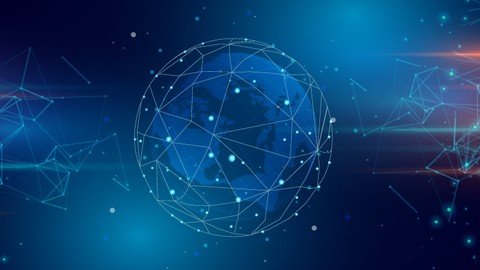
MP4 | Internet of Things - For Absolute Beginner
Video: h264, 1280x720 | Audio: AAC, 44100 Hz
Language: English | Size: 813 MB | Duration: 1h 50m
What you'll learn
Internet of Things, RFID, Middleware, WSN, MEMS, Localization
Requirements
Basic computer knowledge
Description
A course of great values on Internet of Things (IoT). We have crystalized all the essential knowledge for IoT in this single course. Apart from learning What-Is, Why and the elements of IoT, you will also learn the core technologies that empower the IoT - for example, RFID, sensor and sensor network and localization.
Contents of Overview
Build your essential knowledge with this hands-on, introductory course on the Internet of Things:
1. What is IoT?
2. Why we need IoT (and why we need to learn IoT)?
3. What are the elements in IoT - there are 4 important stages you need to know
4. What is the use of RFID in IoT?
5. What is the internal technologies in RFID?
6. One of the key components in RFID - RFID middleware will be covered
7. What are the application scenarios with RFID?
8. What are the security and privacy concerns with RFID?
9. What is WSN?
10. What are meant by sensor nodes in WSN?
11. What is the MEMS all about?
12. What is ambient energy harvesting and why it is important?
13. What are the connectivity approaches in WSN?
14. What are the typical topologies used in WSN?
15. What is meant by localization and why is it important?
16. What is micro-location?
17. What is iBeacons and how it is used in localization?
18. What are the use cases in smart buildings?
Learn Internet of Things (IoT)
The Internet of things (IoT) describes the network of physical objects-"things" or objects-that are embedded with sensors, software, and other technologies for the purpose of connecting and exchanging data with other devices and systems over the Internet.
Things have evolved due to the convergence of multiple technologies, real-time analytics, machine learning, commodity sensors, and embedded systems. Traditional fields of embedded systems, wireless sensor networks, control systems, automation (including home and building automation), and others all contribute to enabling the Internet of things. In the consumer market, IoT technology is most synonymous with products pertaining to the concept of the "smart home", including devices and appliances (such as lighting fixtures, thermostats, home security systems and cameras, and other home appliances) that support one or more common ecosystems, and can be controlled via devices associated with that ecosystem, such as smartphones and smart speakers. IoT can also be used in healthcare systems.
Learn RFID
Radio-frequency identification (RFID) uses electromagnetic fields to automatically identify and track tags attached to objects. An RFID system consists of a tiny radio transponder, a radio receiver and transmitter. When triggered by an electromagnetic interrogation pulse from a nearby RFID reader device, the tag transmits digital data, usually an identifying inventory number, back to the reader. This number can be used to track inventory goods.
Learn WSN
Wireless sensor network (WSN) refers to a group of spatially dispersed and dedicated sensors for monitoring and recording the physical conditions of the environment and organizing the collected data at a central location. WSNs measure environmental conditions like temperature, sound, pollution levels, humidity, wind, and so on.
Learn Localization
Nowadays, wireless technologies penetrate all aspects of our lives. "Internet of Things" (IoT) and "Location- Based Services" are the pillars of Smart City concept. The IoT smart objects surrounding us are an integral part of the Internet, thanks to their computational and communication capabilities. In such applications, location information can be exploited in all the layers of the stack, from the application level (e.g., to correctly interpret measurements from sensor nodes deployed on the field), down to the physical level (e.g., for sensing coverage
Let us know your comments on the course and enjoy!
Who this course is for:
Business managers who want to know IoT business uses
Technical people who want to know IoT technologies






